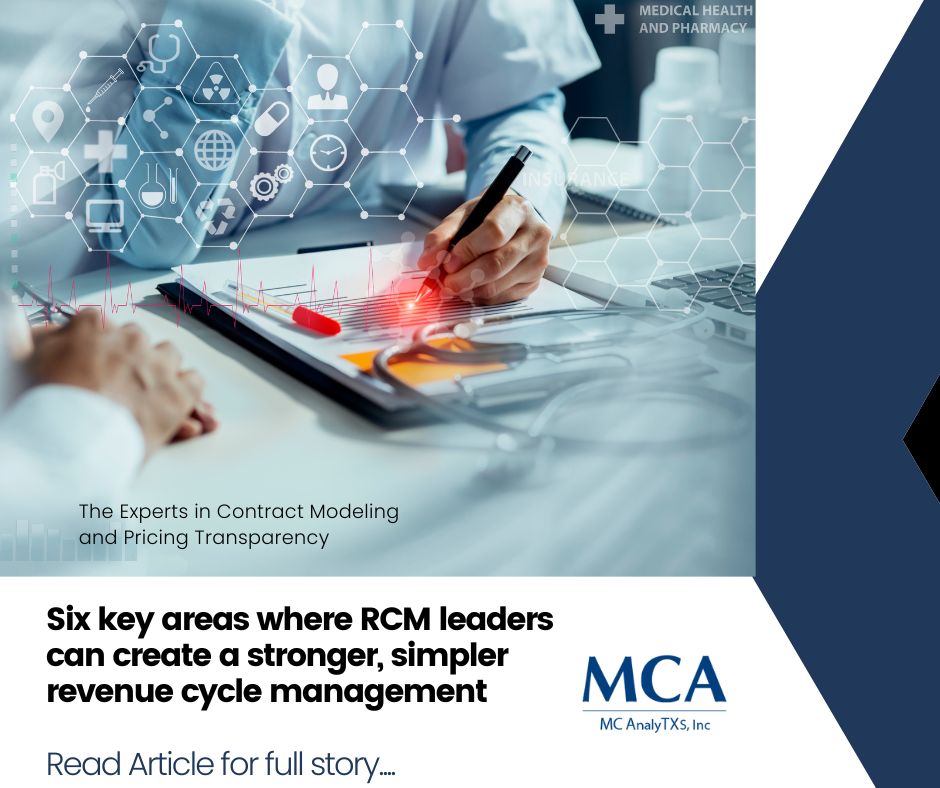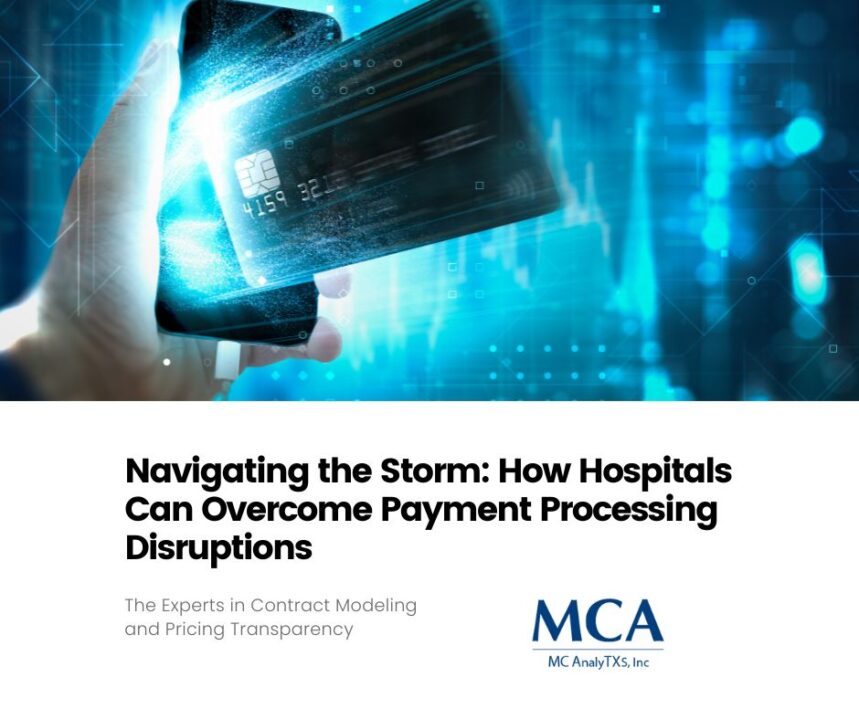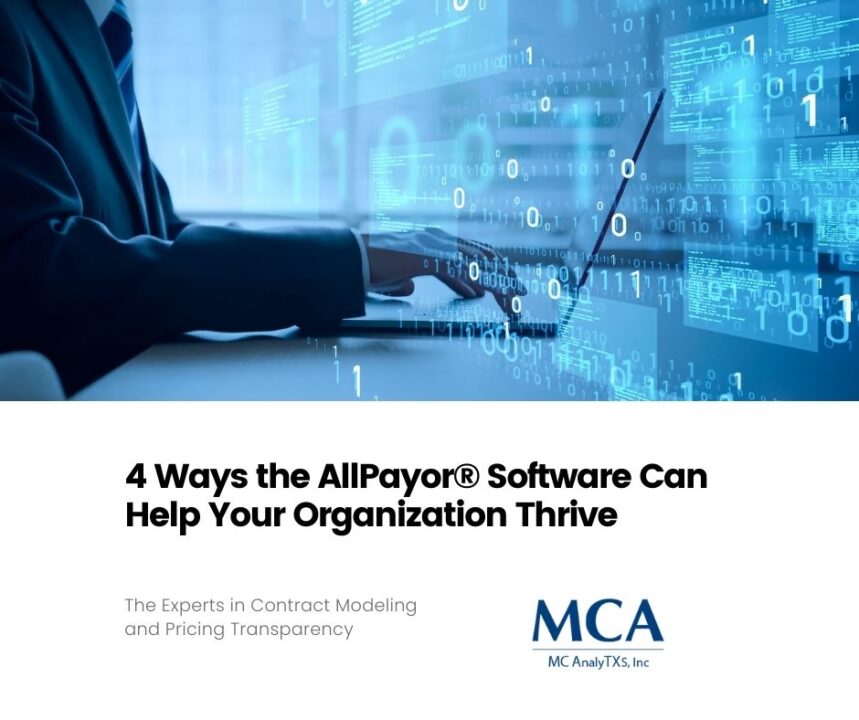
Avoiding Major RCM Automation Problems
February 14, 2024
Navigating the Impact: Understanding the Surge in Disputes Under the No Surprises Act
February 19, 2024The healthcare industry is in a state of perpetual change, and as the adage goes, change is the only constant. Revenue Cycle Management (RCM) leaders find themselves at the intersection of complex billing processes, evolving insurance regulations, and a burgeoning technology landscape. Navigating these waters is no easy feat, but within the tides of change lie opportunities to revamp and fortify the revenue cycle.
As a Revenue Cycle Manager, your role is pivotal in maintaining financial stability for your healthcare organization. To enhance efficiency, it is essential to identify and capitalize on opportunities that present themselves. Here, we’ll delve into six key areas where RCM leaders can seize the day to create a stronger, simpler revenue cycle that ensures optimal returns and patient satisfaction.
1. Taming the Denial Dragon
The Cost of Denials
Healthcare’s denied claims have long been a thorn in the side of RCM. The cost associated with claim denials is striking—up to 3-5% of a provider’s net revenue, according to the American College of Emergency Physicians. A complex and fragmented process often underpins these denials, ranging from straightforward administrative errors to more intricate issues like medical necessity and lack of prior authorization.
Strategies to Minimize Denial Rates
To address denials head-on, RCM leaders must adopt a proactive approach. Investing in technology that can mine data to predict potential pitfalls and utilizing advanced analytics to identify patterns behind denials are crucial steps. Additionally, fostering a culture of continuous training and education for staff, along with stringent policies for claims submission, is key. Automating the claims tracking and follow-up process can also help ensure that no denial goes unnoticed.
The Role of Data in Denial Prevention
Data analytics tools now provide the means to extract actionable insights from the reams of financial and operational data generated by healthcare providers. Utilizing this technology to detect trends in denied claims can pre-emptively pivot your strategy, ultimately leading to a reduction in denials.
2. Fortifying Security Best Practices
The Growing Cybersecurity Threat
The volume and sophistication of cyber-attacks on healthcare organizations are increasing. Ransomware, data breaches, and other security incidents can have devastating effects on an organization’s reputation and its financial well-being. As RCM leaders, it is imperative to stay ahead of these threats.
Prioritizing Compliance and Protection
Creating a robust information security program that prioritizes compliance with regulations such as HIPAA is foundational. Regular risk assessments, staff training, and implementing the latest in cybersecurity protocols are essential. As the guardians of patient financial data, RCM leaders must lead the charge in fostering a culture of security awareness.
The Rise of Blockchain in Healthcare
Blockchain technology has the potential to revolutionize data protection in healthcare. Its inherent security and data integrity features can secure patient records and transactions in the revenue cycle. As blockchain adoption grows, RCM leaders should be at the forefront of understanding and implementing this technology.
3. Optimizing End-to-End Transactions
The Integration Imperative
Siloed systems hamper the free flow of data throughout the revenue cycle. Integrating these systems to create a seamless end-to-end transaction process can significantly improve RCM efficiency. Robust interoperability standards and the adoption of APIs are critical in achieving this integration.
Leveraging Advanced Technologies
New technologies like Robotic Process Automation (RPA) and machine learning can be leveraged to streamline transactions. From patient registration to final payment, RPA can automate mundane tasks, reducing human error and freeing up staff for more complex duties. Machine learning, on the other hand, can provide insights into patient payment behaviors, enabling more accurate revenue prediction and planning.
The Human Touch in a Digital Age
Even as technology plays an ever-larger role, the human touch remains crucial in guiding patients through the payment process. Empathy and communication skills in revenue cycle staff can make a significant difference in patient experience and the likelihood of collections.
4. Navigating the Seas of Price Transparency
The Push for Transparent Healthcare Pricing
With the increase in high-deductible health plans, patients are shouldering more of the financial burden than ever before. This shift necessitates a move towards transparency in healthcare pricing. As of January 1, 2021, hospitals are required to make their pricing publicly available online.
Creating Easy-to-Understand Pricing Information
For RCM leaders, this presents an opportunity to ensure that pricing information is not only available but also understandable. Collaborating with IT teams to present this information in a clear, consumer-friendly manner is essential. It’s also an excellent time to review pricing practices and adjust them to reflect the current market while remaining in compliance with regulations.
Digital Tools for On-Demand Pricing
Digital tools like pricing estimation calculators and patient portals can provide on-demand access to personalized pricing information. These tools not only help patients make informed decisions but also facilitate the revenue cycle by reducing payment surprises and delays.
5. Patient Experience Initiatives: Aligning Financial & Clinical Outcomes
The Power of Positive Patient Experience
An excellent patient experience doesn’t start and end with clinical care; it encompasses the entire patient journey, including the billing and payment process. Patients who have a positive financial experience are more likely to return to your facility and recommend it to others.
Streamlining Patient Financial Interactions
To improve patient financial experience, RCM leaders can employ tactics like pre-visit financial counseling, clear and concise billing statements, and options for payment plans and financial assistance. Additionally, investing in technology that empowers patients to manage their bills online can go a long way in enhancing their experience.
Measuring Success through Patient Satisfaction Scores
Just as clinical outcomes are measured, patient financial experience should be quantified through patient satisfaction scores. These metrics can guide your initiatives and provide an objective measure of success.
6. Boosting Collections with Strategic Reforms
The Challenge of Rising Patient Balances
As patient responsibility for healthcare costs increases, the challenge of collecting on these balances is more pronounced. Strategic reform is necessary to meet this challenge head-on.
Developing Personalized Collection Strategies
One-size-fits-all collection approaches no longer suffice. RCM leaders need to develop personalized strategies that align with patient preferences and financial capabilities. Offering flexibility in payment options, timing, and channels can increase the likelihood of prompt payment.
The Role of Technology in Collections
Technological innovations such as patient financial engagement platforms, mobile payment solutions, and predictive analytics can revolutionize the collection process. These tools can optimize outreach, reduce accounts receivable, and increase the efficiency of the revenue cycle.
7. Embracing Generative AI for Smarter RCM
The Promise of Generative AI
Generative Artificial Intelligence (AI) is a type of AI that creates new content, including financial documents, emails, and other written communications. It’s a game-changer, especially when it comes to handling the vast amount of data that is part and parcel of revenue cycle management.
The Application of AI in RCM
In RCM, generative AI can be used for a multitude of tasks, from drafting denial appeals to crafting patient financial counseling scripts. This application can save significant time for your team and ensure that documents are grounded in best practices and compliance.
Data Sensitivity and Ethical Considerations
However, it is important to approach the use of AI in RCM with sensitivity, ensuring that patient data is handled with the utmost care and that ethical considerations are addressed. Transparency about the use of AI tools in the revenue cycle and their limitations is also vital.
As the healthcare landscape evolves, so too must the revenue cycle. RCM leaders have the opportunity to guide their organizations through the complexities of revenue management by embracing new technologies, enhancing patient experiences, and fostering a culture of security and compliance. The approach necessitates a strategic and forward-thinking mindset that is both adaptable and innovative. By seizing these six opportunities, RCM leaders can ensure that their organizations remain at the forefront of financial health and patient satisfaction in the healthcare industry.





